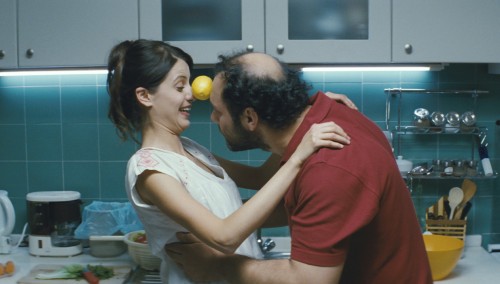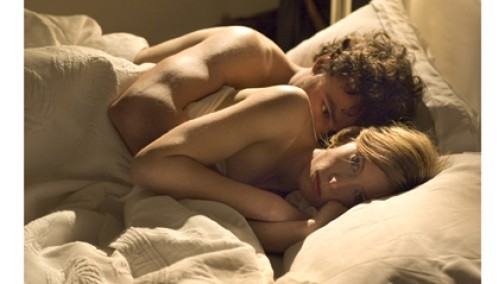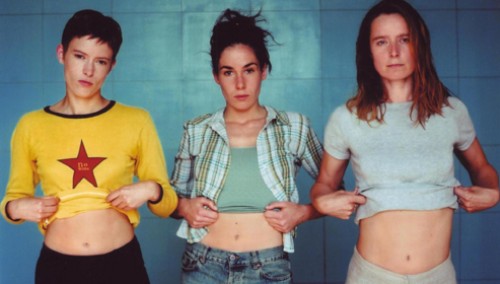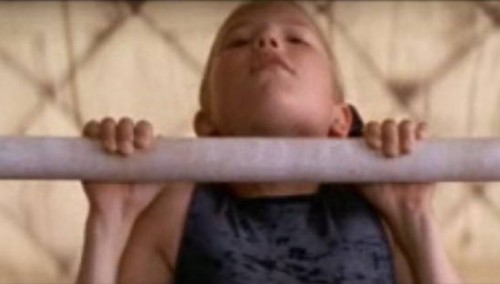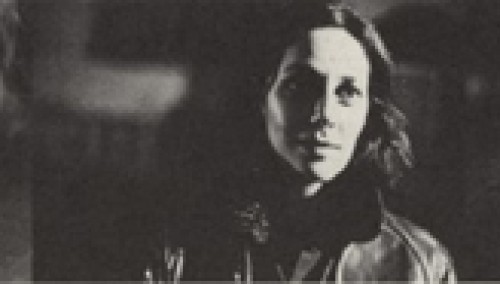Biography
Nanouk Leopold, born 1968, went to art school in Rotterdam and film school in Amsterdam. Her debut Îles Flottantes was produced by Stienette Bosklopper and edited by Katharina Wartena, two women with whom she has been working successfully for more than ten years. Next to making films, Leopold was writing about cinema for a little while. She interviewed Eric Rohmer (for Skrien), and wrote a refreshingly detailed piece on the big belt worn by the carpenter in the Dardenne film Le Fils (for de Filmkrant).
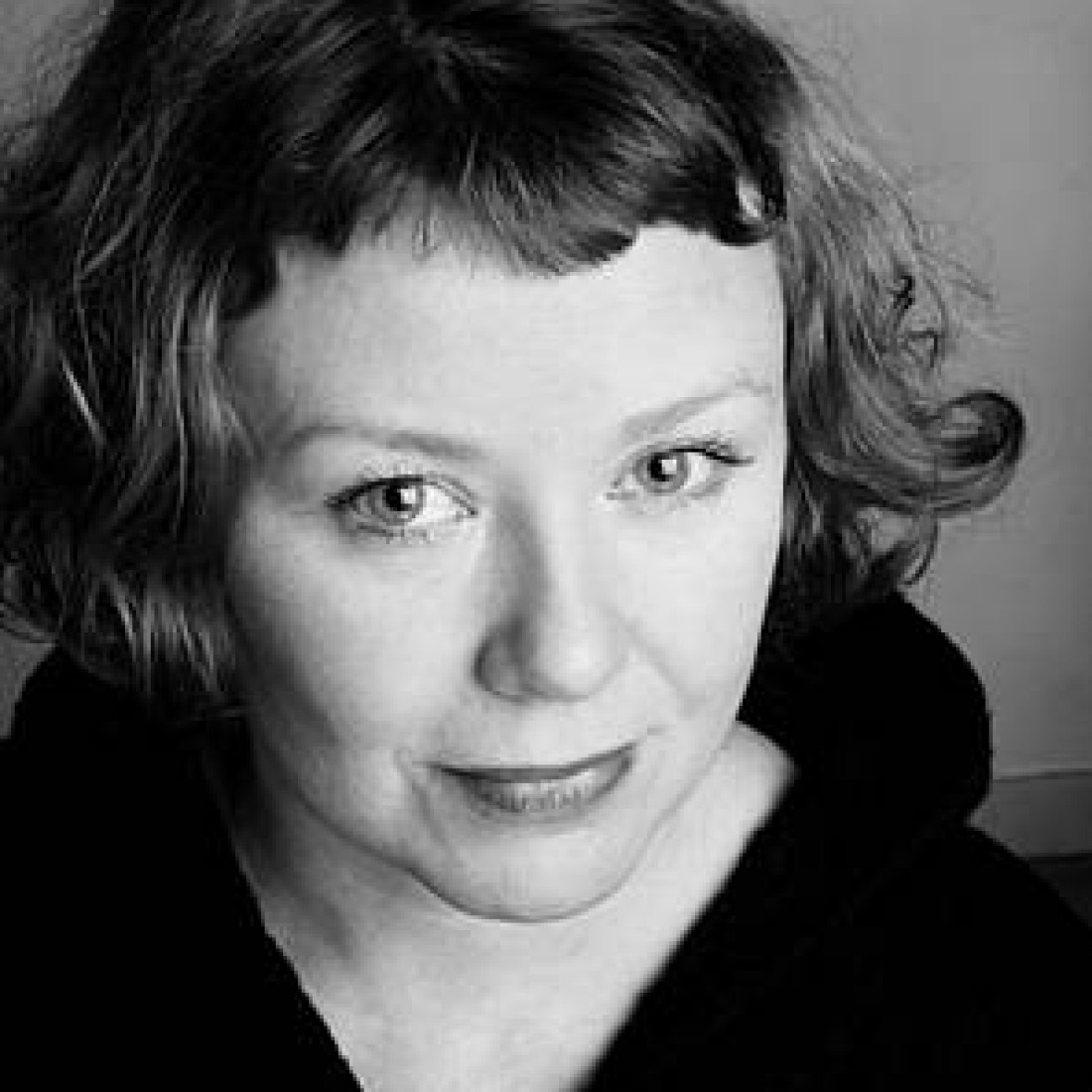
Biography
Stienette Bosklopper, born 1961, studied history in Groningen and started her career in film prodcution in 1985, as production assistent to René Scholten at Studio Nieuwe Gronden. In 1990 she was part of a group of female filmmakers who established the production company Circe Films. Six years later she became the managing director. In 2000 she started her close collaboration with director Nanouk Leopold, and was appointed chairwoman of the Nederlandse Vereniging van Speelfilmproducenten (NVS).

Essay
Nanouk Leopold: Floating Islands
by Belinda van de Graaf
Nanouk Leopold is a filmmaker from Rotterdam, the Dutch city that transforms into the centre of independent world cinema every January. Leopold was a kid when the International Film Festival Rotterdam was born. They grew up together. As a teenager in the eighties she walked into films by Antonioni, Buñuel and Pasolini, European directors from the seventies that she now calls her masters.
‘I was completely upset – as the films in the festival showed that you could also do things differently’, she once said. Although Leopold went to Willem de Kooning Academy in Rotterdam and filmschool in Amsterdam, her cinematic education was already largely shaped while being in highschool.
Things really came together when her first feature Îles Flottantes (2000) – produced by Stienette Bosklopper of Circe Films - was selected for the Tiger Award competition for new talent, and premiered in her hometown. When her second feature Guernsey (2005) was selected for the Cannes program Quinzaine des Réalisateurs, it was compared to the work of Antonioni - because of the psychology not being in the characters, but in the mise-en-scène. French newspaper l’Humanité wrote at the Cannes premiere of ‘a formalism and pessimism that you would more expect coming from Austria than from the Netherlands’. Leopold was happy with the comparison to Haneke – another hero.
Leopold‘s sharp and sober inquiries in families and friendships, and the psyche of women, also brought her to Berlin (Wolf sberg en, 2007) and Toronto (Brow nian Movem ent, 2010). In ten years‘ time she established herself as a remarkable female voice coming from the small world of Dutch art cinema, asking existential and philosophical questions about the longings and motifs of modern women.
The three girlfriends in Îles Flottantes are clearly the center of the action - struggling with love, friendship and family in quite a sobering way. Prior already, in Weekend (1998) - which was given the Tuschinski Award by the Dutch critics for best graduation film - Leopold had shown three girlfriends nearing the magical age of thirty. Îles Flottantes – the title being a great reference to women as ‘floating islands’ - was a kind of feature length version of Weekend, focusing on a Rotterdam summer filled with adultery, rape, death, break-ups and lots of swallowed emotions and signs of non-communication and misunderstanding.
What made this big city operetta so remarkable – apart from the strong, laconic style of acting - was the calm and clever and very precise framing, something Leopold perfected in her next three movies. Her focus became women getting out of control in a completely controlled universe.
In her second film Guernsey one of the actresses from Îles Flottantes, Maria Kraakman, returned in the main role, now as a young wife and mother who - after a traumatic experience – starts to look at ther own life, like a detective. Guernsey went on to win two Golden Calves for best director and best actress in the Nederlands Film Festival and the prize of the Dutch critics. For sure, if Dutch cinema was held hostage by words, Leopold freed it with her speechless spy.
Leopold‘s women look strong from the outside. They study. They travel. They have good jobs as doctors and scientists. They know how to handle a drill and a hammer. In the background there are loving husbands and kids.
If needed, they have an abortion or a liposuction. ‘The comfortable microwave generation’, as Leopold once called it.
But does it mean that there are no mysteries left? That there are no longings anymore? Remember the great Gena Rowlands directed by her husband John Cassavetes in A Wom an under the Inf luence (1974) - playing a nervous wife and mother on the fine line of being extremely sensitive and crazy. Cassavetes scratched the varnish and showed human behaviour as impulsive, abrupt and raw. Leopold‘s style may be different, her focus isn’t.
Anna in Guernsey – after being confronted with the suicide of a female colleague - starts to look at her own life, her own routine. Sabine in Wolf sberg en – married, and mother of two young daughters – sneaks out of the house to have sex with her alcoholic ex-lover. Her mother is not talking anymore. Her sister can’t stop crying. Is her daughter eating glass? Charlotte in Brow nian Movem ent – a doctor with a loving husband and a young son – secretly rents an appartment to have sex with a variety of patients: fat ones, hairy ones, old ones and bald ones.
In Brownian Movement German actress Sandra Hüller is even more mysterious than in Requiem (2006), the film by German director Hans-Christan Schmid (and contemporary of Leopold) in which she played the award-winning role of an epileptic young woman who – in vain - tries to liberate herself from her strict catholic upbringing and feelings of fear and guilt. Brow nian Movem ent is not about a patient but about a doctor, and it is not a priest but a psychiatrist who tries to help her. So we go from the world of religion to the world of science, but this doesn’t make it any better. Nobody knows what’s going on in the heads of these women, neither the priest nor the psychiatrist. They pretend to know.
In the meantime Leopold got some company. In 2009 there was the big surprise of three Dutch directors – all female - being selected for the Forum, the section of the Berlinale in which Leopold‘s Wolf sberg en premiered two years earlier as one of the films ‘pushing the limits of the medium and perception itself’. The new ‘pushers’ were Eugenie Jansen with Calimucho, Esther Rots with Can Go Through Skin and Sonja Wyss with Winter Silence.
Later that same year, Dutch debutant Urszula Antoniak – yet another female - was the surprise winner in Locarno with Nothing Personal – a drama with a little echo of Agnès Varda’s Sans Toit Ni Loi, about a young Dutch woman adrift in rainy Ireland.
That same year the Nederlands Film Festival tried to label a couple of Dutch art film directors – amongst them Leopold - with the collective noun Dutch Angle. However, talking about a new wave or a new school turned out to be tricky. The films involved were quite different, and the filmmakers did not form a group. They worked on their own.
At the same time, a kind of feminising of the Dutch art film cannot be denied, and with more talented women behind the camera, more intense portraits of women started to come out, with Rots, Wyss and Antoniak focus-ing on emotionally affected women, trying to come to terms with traumatic experiences – filmed in isolated, wintry landscapes as reflections of their souls.
Leopolds cinema was always more oriented on urban middle class life, on swimming pools and bath tubs, and on fabulous examples of modern archictecture – like the cool buildings of Le Corbusier in the Indian cities of Chandigarth and Ahmedabad, visited by Charlotte in Brownian Movement. She looks small in Leopold‘s overwhelming space and silence.
Stienette Bosklopper: Running, Biking, Sweating
by Belinda van de Graaf
A remarkable link between some successful Dutch art films is Dutch producer Stienette Bosklopper of Amsterdam-based Circe Films. Bosklopper produced all four features directed by Nanouk Leopold, and is busy producing her fifth, based on the novel Boven Is Het Stil (It’s All So Quiet) by Dutch writer Gerbrand Bakker. “It’s a totally different project for Nanouk”, says Bosklopper about the news. “It’s the first time she’s adapting a novel. It’s the first time that a man is the main character. And it’s the first time that she really goes out of the city, filming farm life. The story concerns a farmer’s son who’s gay, and the old father not accepting this. I am busy financing, and preparing to film in the winter of 2011/2012.”
Until now, Leopold has been focusing on women. And so has Bosklopper. Her film production company Circe Films, situated in a tiny office in the Amsterdam red light district, is named after a character from Greek mythology: Circe, the goddess of magic.
Circe Films was established in 1990 by three young female filmmakers working in television, amongst them Bosklopper, who became managing director in 1996, and the only one to continue. Her first feature was One Man and his Dog (1998) by Annette Apon, belonging to the generation of Dutch directors that came up in the sixties and seventies. Bosklopper‘s second production was Îles Flottantes (2000), marking Boskloppers interest in a new generation of filmmakers born in the sixties and seventies.
Only recently Bosklopper has opened her doors to male directors. She produced Ruta del Jaca (2009) by Amsterdam-based Kris Kristinsson and Heavenly Life on Earth (2010) by Rotterdam-based Jesse de Jong. The latter film is a sweet and often hilarious documentary in which 38-year-old director Jesse de Jong is in search of belonging. He goes to try and live in a commune in the Dutch countryside. It’s a small, personal film of 73 minutes which will probably not travel further than the Rotterdam film festival, but at the same time shows Bosklopper‘s courage as a producer. The theme of searching for a way of living, a way of being and behaving, seems central to Bosklopper‘s output as a producer. “It’s not that I didn’t want to work with male directors”, says Bosklopper, “it just happened that I found scripts written by women more interesting.”
Bosklopper also went into coproduction, so far working with filmmakers from Belgium, Romania, Taiwan and Turkey. She coproduced Now here Man (2008) by Patrice Toye, The Happiest Girl in the World (2009) by Radu Jude, Visage (2009) by Tsai Ming-liang and Our Grand Despair (2010) by Seyfi Teoman, selected for competition at the Berlinale 2011.
Her strongest working partnership, however, is with Nanouk Leopold. “Nanouk comes up with the idea for a new film. We discuss it and then we try to make it become real”, says Bosklopper. When in 2005 their second feature Guernsey (2005) was selected for the Cannes program Quinzaine des Réalisateurs, it was not only a big step for Leopold, but also for Bosklopper who became ‘Producer on the Move’ in Cannes – an initiative of the European Film Promotion (EFP) to put the spotlight on young talented producers. Tips and tricks were then offered in a book publication: De Filmproducent: Handboek voor de Praktijk (2008), written by Bosklopper in collaboration with Carolien Croon, then managing director of the Nederlandse Vereniging van Speelfilmproducenten (NVS). A starting producer called it the bible for starting producer, the focus being the classic triangle of scriptwriter, director, producer.
Bosklopper also produced films by Eugenie Jansen and Esther Rots, two of three female directors who were selected for the Forum of the Berlinale 2009. Jansen with her wonderful circus film Calim ucho, in which real circuspeople play fictional characters in a real circus (produced by Bosklopper); Rots with her debut film about female paranoia Can Go Throug h Skin (produced by the director herself). Bosklopper was already involved in the work of both directors at an early stage. She showed to have a good nose for talent by producing Jansen‘s short film The Rules of Flying (2003), a playful portrait of a little girl who prepares to fly by doing gymnastics.
As to Esther Rots, Bosklopper produced her short film Dialog ue Exercise no.1: The City (2005) – an energetic bicycle tour through Amsterdam with a young woman whose complaint about (city)life never stops. In both shorts we enter the thoughts of rather obsessed female characters, while running, biking, sweating.‘She creates a kind of filmschool’, said 28-year-old Dutch director Sacha Polak in an interview. “She is like a coach. She helps me with my first script. That attitude is quite seldom for a producer.” Polak‘s first feature Hem el, In Betw een is to be released by Circe this year; eight chapters in the life of a young woman, shot in Rotterdam and Sevilla by Daniel Bouquet, the director of photography of Urszula Antoniaks Locarno winner Nothing Personal.
For sure, Bosklopper is an important engine behind the feminising of Dutch art cinema, at the same time aware of a less-talked about economical phenomenon. “For art films the budgets are lower, and there’s less money to be earned”, says Bosklopper. “I see that male directors who started out in art cinema (like the Dutch Robert Jan Westdijk and Martin Koolhoven) are more focused on commercial projects. It seems that men still have to earn the money.”

